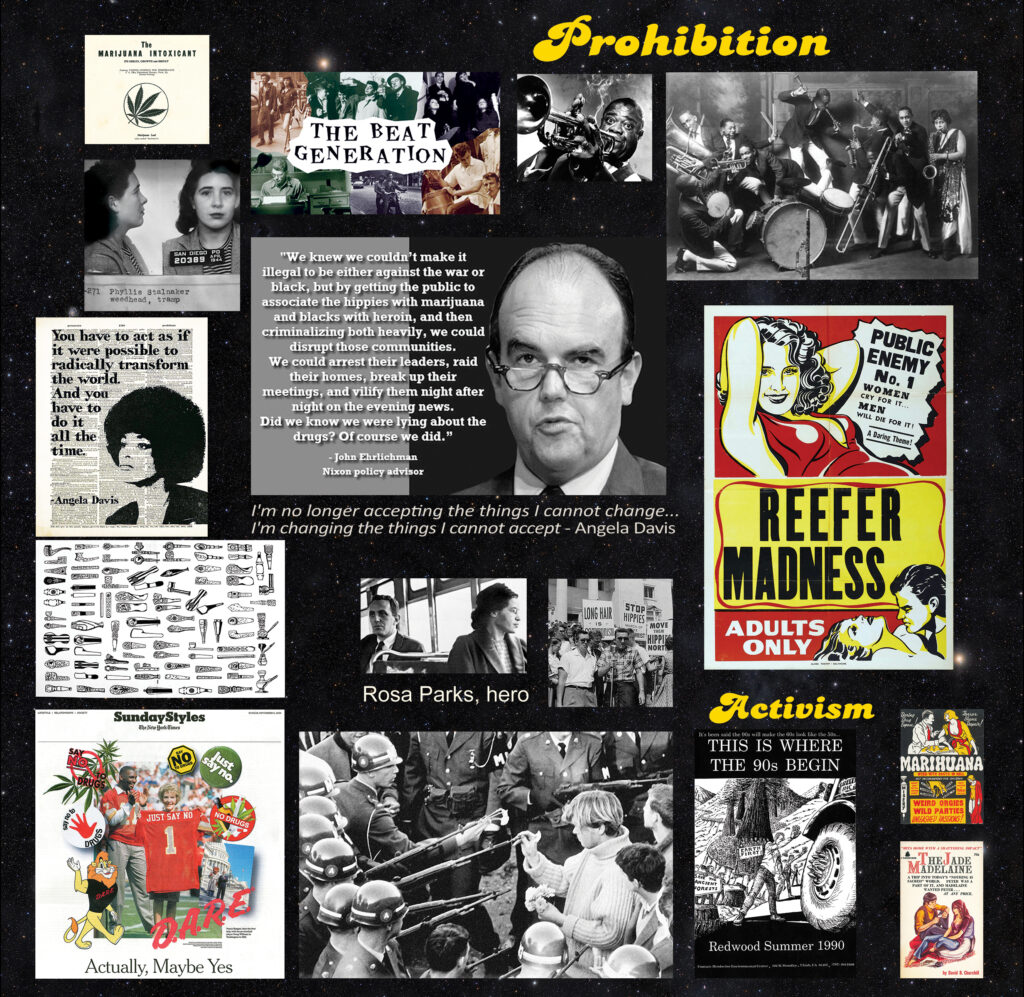perspectives on counterculture
PROHIBITION
In the early 1900s, pharmacy shelves were stocked full of medicines containing extracts of cannabis. The major pharmaceutical companies of the time all had large acreages of cannabis planted in the Midwest to supply the constant demand. But in the 1920s and ‘30s all that changed, fueled by the yellow journalism of the Hearst publishing empire and the political ambitions of Harry Anslinger, who conflated drug use, race, and music in his misguided zeal for law and order.
In 1937, Ansliger wrote ‘Marijuana, Assassin of Youth,’ reinforcing the supremacist trope that white women and children were in danger from drug-addled, jazz-playing people of color. This racist propaganda helped to cement the perception of cannabis (marijuana) as evil and to greatly influence what continued to be “official” government policy into the 1970s and ‘80s.
By then, the Back-To-The-Land movement had started an agricultural renaissance, which included the breeding and cultivation of cannabis. At the same time the Vietnam War was galvanizing youth activism. Activists, who knew cannabis was not the “devil weed” proclaimed by government propaganda, brought marijuana to anti-war protests, merging resistance to the war with the act of smoking cannabis. Returning veterans from Southeast Asia brought back seeds and the use of cannabis to help with their PTSD symptoms.

